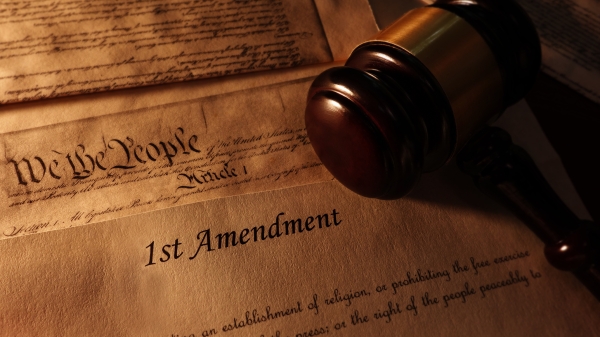New ASU course illuminates how racism exercises its power geographically

Black Lives Matter protest rally, June 2020. Photo courtesy of depositphotos.com
The summer of 2020 was one of racial reckoning for America. Millions of people took to the streets in protest following the killings of unarmed Black individuals Ahmaud Arbery, Breonna Taylor and George Floyd, forcing the United States to confront the racism of its past and present.
But as a country, how did we get to this point? And how has geography contributed to our understanding of race, systemic racism and historical racist policies that have led to this unique moment in the United States’ history?
Rashad Shabazz, a human geography associate professor in Arizona State University's School of Geographical Sciences and Urban Planning, has created a course that examines race in the United States from a spatial perspective.
Shabazz, whose research focuses on the spatial function of racism through slavery, segregation and mass incarceration, is teaching Race Geographies in the United States, a new elective class that will be offered for the first time to ASU students in the spring 2021 semester
“In the wake of racial justice protests this past summer, Race Geographies in the U.S. will help students understand how racism works, and how race and geography are linked to the protests from this summer,” Shabazz said. “Racism is real. It shortens lives, it shapes our economy, it says whose life has value, and it impacts our geographies. Where you live, go to school, where you can and cannot walk in safety are examples of how racism works.”
One of the most pervasive examples of understanding race through a geographic lens in America, Shabazz says, is through the creation of racially restrictive suburbs.
“The creation of white suburbs in the aftermath of the Second World War was groundbreaking on many levels, but what stands out is how the suburbs were vital for producing white people and our cultural understanding of what 'white' is,” Shabazz said.
He explains that because suburbs were racially restricted to people of European descent —Jews, Irish, English, Germans, Italians — in the years after World War II, ethnic whites that moved into the suburbs began to date and produce offspring that were made from the mix of European ethnics, giving rise to our modern notion of “white.”
“White Americans today are multiethnic, Irish/German or French/English, for example. That’s not an accident. This was made possible by the racial restrictions of the suburbs,” Shabazz said.
In the class, students will learn a mix of geography, history and theory, through the exploration and analysis of books, articles, films and documentaries. The class will also explore race and geography, in terms of their impacts on city organization and cultural production, and how race and geography work together to create urban, suburban and rural landscapes.
“Courses like Race Geographies illuminate what racism is, how it works and how we can create solutions to end institutionalized racist practices,” Shabazz said. “Racism is part of the meta-language of our lives, whether you are negatively affected by it or not. We all swim in a sea of institutional racism and learning about how it happened and how it affects us is not only fascinating, but it's our responsibility.”
“This will be one of the most important classes students take this (coming) year.”
Race Geographies in the United States is one of a series of courses offered by ASU that examine geography in unique ways. Visit the School of Geographical Sciences and Urban Planning YouTube page to watch class preview videos from faculty and learn more about spring 2021 offerings.
More Law, journalism and politics

5 takeaways about artificial intelligence and elections
Next year’s midterm elections are happening at a crucial time in the adoption of AI, with concerns that the new technology could…

ASU dominates Rocky Mountain Emmys, showcasing range of talent
Arizona State University stole the spotlight at the Rocky Mountain Southwest Emmys, walking away with an impressive haul of shiny…

New First Amendment Academy empowers citizens with knowledge about 5 core freedoms
According to a 2024 survey, there is widespread misunderstanding among many Americans around the nuances of the First Amendment.…